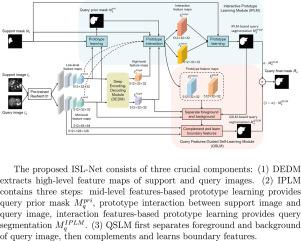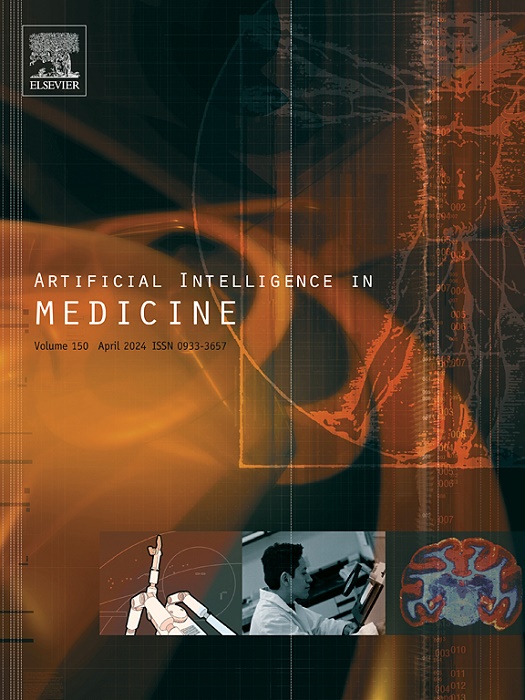Interactive prototype learning and self-learning for few-shot medical image segmentation
IF 6.2
2区 医学
Q1 COMPUTER SCIENCE, ARTIFICIAL INTELLIGENCE
引用次数: 0
Abstract
Few-shot learning alleviates the heavy dependence of medical image segmentation on large-scale labeled data, but it shows strong performance gaps when dealing with new tasks compared with traditional deep learning. Existing methods mainly learn the class knowledge of a few known (support) samples and extend it to unknown (query) samples. However, the large distribution differences between the support image and the query image lead to serious deviations in the transfer of class knowledge, which can be specifically summarized as two segmentation challenges: Intra-class inconsistency and Inter-class similarity, blurred and confused boundaries. In this paper, we propose a new interactive prototype learning and self-learning network to solve the above challenges. First, we propose a deep encoding-decoding module to learn the high-level features of the support and query images to build peak prototypes with the greatest semantic information and provide semantic guidance for segmentation. Then, we propose an interactive prototype learning module to improve intra-class feature consistency and reduce inter-class feature similarity by conducting mid-level features-based mean prototype interaction and high-level features-based peak prototype interaction. Last, we propose a query features-guided self-learning module to separate foreground and background at the feature level and combine low-level feature maps to complement boundary information. Our model achieves competitive segmentation performance on benchmark datasets and shows substantial improvement in generalization ability.

基于交互式原型学习和自学习的小镜头医学图像分割
Few-shot学习减轻了医学图像分割对大规模标记数据的严重依赖,但与传统深度学习相比,在处理新任务时表现出很强的性能差距。现有的方法主要是学习少数已知(支持)样本的类知识,并将其扩展到未知(查询)样本。然而,由于支持图像与查询图像的分布差异较大,导致类知识迁移出现严重偏差,具体来说可以归结为两种分割挑战:类内不一致和类间相似,边界模糊和混淆。在本文中,我们提出了一种新的交互式原型学习和自学习网络来解决上述挑战。首先,我们提出了深度编解码模块,学习支持和查询图像的高级特征,构建具有最大语义信息的峰值原型,为分割提供语义指导。然后,我们提出了一个交互原型学习模块,通过进行中级特征的平均原型交互和高级特征的峰值原型交互来提高类内特征一致性和降低类间特征相似性。最后,提出了基于查询特征的自学习模块,在特征层分离前景和背景,并结合底层特征映射来补充边界信息。我们的模型在基准数据集上取得了具有竞争力的分割性能,在泛化能力上有了实质性的提高。
本文章由计算机程序翻译,如有差异,请以英文原文为准。
求助全文
约1分钟内获得全文
求助全文
来源期刊

Artificial Intelligence in Medicine
工程技术-工程:生物医学
CiteScore
15.00
自引率
2.70%
发文量
143
审稿时长
6.3 months
期刊介绍:
Artificial Intelligence in Medicine publishes original articles from a wide variety of interdisciplinary perspectives concerning the theory and practice of artificial intelligence (AI) in medicine, medically-oriented human biology, and health care.
Artificial intelligence in medicine may be characterized as the scientific discipline pertaining to research studies, projects, and applications that aim at supporting decision-based medical tasks through knowledge- and/or data-intensive computer-based solutions that ultimately support and improve the performance of a human care provider.
 求助内容:
求助内容: 应助结果提醒方式:
应助结果提醒方式:


